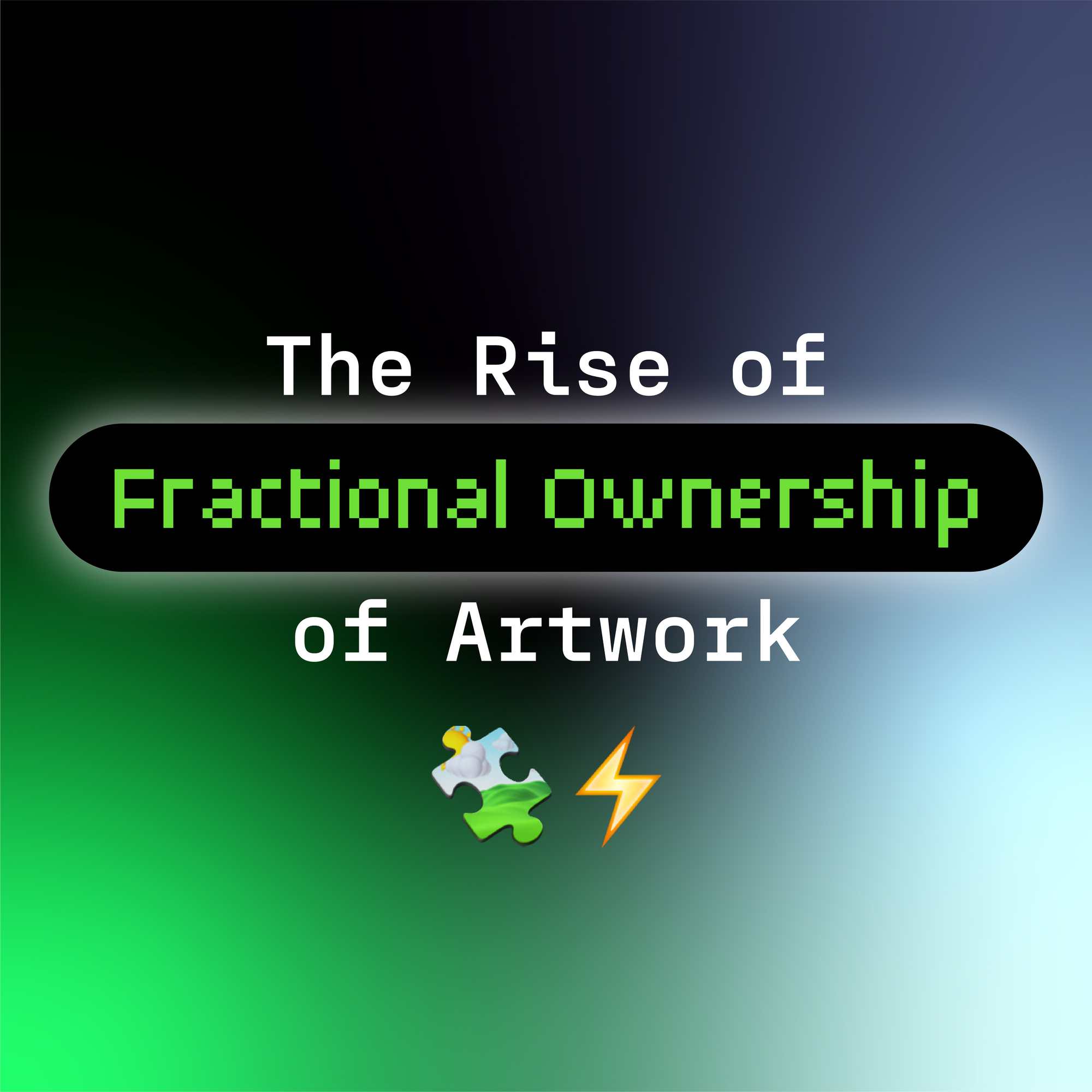The Rise of Fractional Ownership of Artwork
By Terrain.art | Jan 12 2022 · 4 min read
It is already being touted as the next big thing in the art market as several platforms offer a chance to own a piece of a master’s work.
You no longer have to beg, borrow, or steal to own a luxury asset. The latest investment trend is fractional ownership – be it an artwork, yacht, or even a racehorse.
Of course, unlike a Russian tycoon or an Italian mafia boss, you won’t be able to hang a Da Vinci on the walls of your living room or cruise the blue waters on your million-dollar yacht, but you would be able to sell your fractional ownership of the luxury asset just like people do in the stock market.
So, how does fractional ownership of artworks work? And why is this taking the art world by storm?
The Rise of Fractional Ownership of Artworks
Fractional ownership of artworks has been popular among investors for the past couple of years, and experts say that fractional ownership of artwork has the potential of democratizing the art market. Small investors can invest in parts of an artwork, just like a stock, and sell them for profit, just like derivatives in a stock exchange without the underlying asset being sold. The transactions can be recorded on blockchain technology – an open ledger system that can effectively counter fraudulent transactions via a smart contract system that enables transactions only if a set of preconditions are met.
Interest in cryptocurrencies, blockchain technology, and digital currencies has grown exponentially throughout the Covid 19 pandemic. The rise of fractional ownership can be seen as a part of this trend.
The Covid Push to Fractional Ownership
In 2020, when the Covid-19 pandemic hit, galleries closed and the art market took a beating. Since then, the market has rebounded to record heights with auction houses posting outstanding online sales. There’s an increased interest in digital art, NFT artworks, and fractional ownership of artworks – all of which can be paid for through cryptocurrencies such as Ether or Bitcoin. There are dedicated platforms that offer partial ownership of art, such as Masterworks and Otis.
Masterworks is an investment platform that allows investors to purchase shares of multimillion-dollar works from renowned artists like Banksy, Jean-Michel Basquiat, and Yayoi Kusama, etc. Maecenas, on the other hand, is one of the best-funded firms, selling tokenised versions of masterpieces. In 2018, it sold 31.5% of Warhol’s 14 Small Electric Chairs for a staggering USD 1.7 million. While the original is in Switzerland, the remaining 68.5% of the work is set to be tokenised soon.
Opinions Around Fractional Ownership
Opinions, however, seem to be divided among experts regarding the future of fractional ownership. Advocates of fractional ownership think that it is a fast and easy way to invest your money; it offers portfolio diversification, gives you steady returns, and is a pocket-friendly investment.
Others, like Frédéric de Senarclens, the founder of Art Market Guru, thinks that there’s difficulty in creating liquidity with fractional ownership and the client base is not big enough. A 2019 Deloitte report on art and finance showed that only 19% of art collectors and dealers are interested in fractional ownership. Younger collectors and dealers were, however, far more interested in this kind of ownership as compared to older, more established owners.
While the consensus among experts seems to be that fractional ownership has a bright future, problem areas persist:
- Platforms selling fractional ownership of art need to find a way to make their offerings more attractive. The staggeringly high prices for tiny fractions of artworks can deter young investors who do not have deep pockets.
- Art is essentially different from other capital assets like gold and stocks that are fungible, creating significant variability in prices and investments.
- Finally, it’s not that the sale of all tokenised artworks has taken off. For example, even though Warhol’s 14 Small Electric Chairs sold for USD 1.7 million, the amount still fell short of the original 49% ownership that was on offer. Since this is a new form of investment, it might take a few more years for investors to get used to it. The requirement of the payment to be completed in crypto may raise issues of oversight and volatility as several governments globally do not presently allow crypto transactions.

